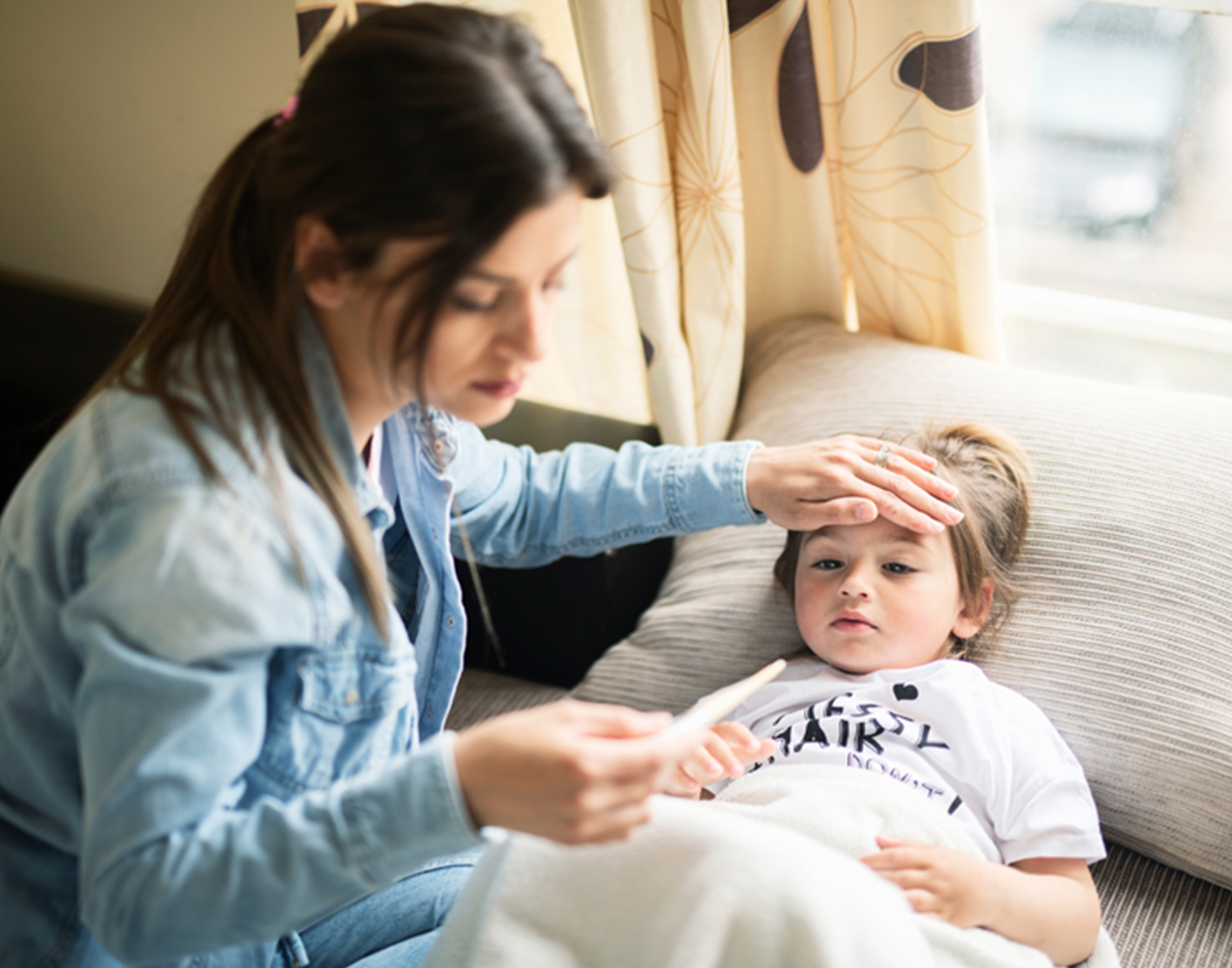
COVID-19 symptoms
Definition
COVID-19 is a highly infectious respiratory illness caused by a virus called SARS-CoV-2.
COVID-19 symptoms can range from mild to severe. Symptoms may include:
Fever - Chills
Cough Shortness of breath or difficulty breathing- Fatigue
- Muscle aches
- Headache
- Loss of sense of taste or smell
- Sore throat
- Stuffy or runny nose
- Nausea and vomiting
- Diarrhea
This is not a complete list of possible symptoms. Symptoms may change with new variants of the virus.
Some people may have no symptoms at all. Many have only some, but not all of the symptoms. Symptoms can also vary, depending on whether you are vaccinated.
Symptoms may develop within 2 to 14 days after you are exposed to the virus. Most often, symptoms appear around 5 days after exposure. However, you can spread the virus even when you do not have symptoms.
More severe symptoms that require seeking medical help right away include:
- Trouble breathing
- Chest pain or pressure that persists
- Confusion
- Inability to wake up
- Blue, gray, or pale skin, lips, face, or nail beds, depending on your skin tone
Older people and people with certain existing health conditions have a higher risk of developing severe illness and death. Health conditions that increase your risk include cancer, COPD, diabetes, heart disease and stroke, a weak immune system (immunocompromised), and many others.
Alternative Names
Coronavirus novel 2019 - symptoms; 2019 Novel coronavirus - symptoms; SARS-Co-V2 - symptoms
Considerations
Some symptoms of
The only way to know if you have COVID-19 is to be
Most people with the illness have mild to moderate symptoms and recover fully. Whether you get tested or not, if you have symptoms of COVID-19, you should avoid contact with other people so you don't spread the illness.
Causes
COVID-19 is caused by the SARS-CoV-2 virus (severe acute respiratory syndrome coronavirus 2).
COVID-19 spreads to people within close contact (about 6 feet or 2 meters). When someone with the illness coughs or sneezes, infectious droplets spray into the air. You can catch the illness if you breathe in or touch these particles and then touch your face, nose, mouth, or eyes.
Home Care
If you have COVID-19 or think you have it,
To help
- Rest and drink plenty of fluids.
- Acetaminophen (Tylenol) and ibuprofen (Advil, Motrin) help reduce fever. Sometimes, providers advise you to use both types of medicine. Take the recommended amount to reduce fever. DO NOT use ibuprofen in children 6 months or younger.
- A lukewarm bath or sponge bath may help cool a fever. Keep taking medicine -- otherwise your temperature might go back up.
- If you have a dry, tickling cough, try cough drops or hard candy.
- Use a vaporizer or take a steamy shower to increase moisture in the air and help soothe a dry throat and cough.
- Do not smoke, and stay away from secondhand smoke.
When to Contact a Medical Professional
You should contact your provider right away:
- If you have symptoms and think you may have COVID-19
- If you have COVID-19 and you are in a group for whom antiviral medicine may be given
- If you have COVID-19 and your symptoms are getting worse
Call 911 or the local emergency number if you have:
Trouble breathing Chest pain or pressure that persists- Confusion or inability to wake up
- Blue, gray, or pale skin, lips, face, or nail beds
- Any other symptoms that are severe or that concern you
What to Expect at Your Office Visit
Your provider will ask about your symptoms, any recent travel, and any possible exposure to COVID-19. Your provider may take swab samples from the back of your nose and throat.
If your symptoms do not indicate a medical emergency, you can recover at home.
For more serious symptoms, you may need to go to the
References
Centers for Disease Control and Prevention website. Testing for COVID-19.
Centers for Disease Control and Prevention website. Types of COVID-19 treatment.
Centers for Disease Control and Prevention website. Respiratory
virus guidance.
Centers
for Disease Control and Prevention website. Symptoms of COVID-19.
Review Date: 22/02/2023
The information provided herein should not be used during any medical emergency or for the diagnosis or treatment of any medical condition. A licensed physician should be consulted for diagnosis and treatment of any and all medical conditions. Call 911 for all medical emergencies. Links to other sites are provided for information only -- they do not constitute endorsements of those other sites. Copyright ©2019 A.D.A.M., Inc., as modified by University of California San Francisco. Any duplication or distribution of the information contained herein is strictly prohibited.
Information developed by A.D.A.M., Inc. regarding tests and test results may not directly correspond with information provided by UCSF Health. Please discuss with your doctor any questions or concerns you may have.



























